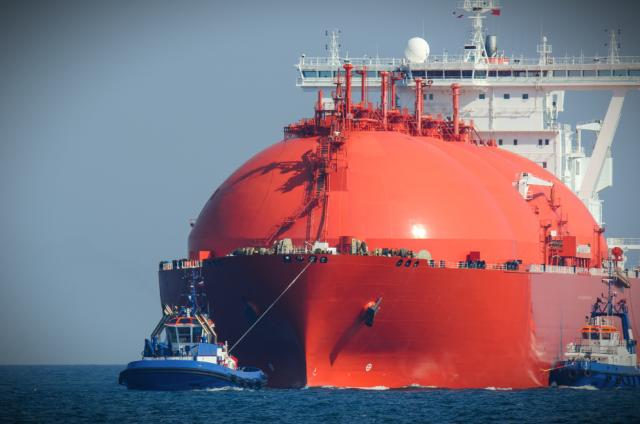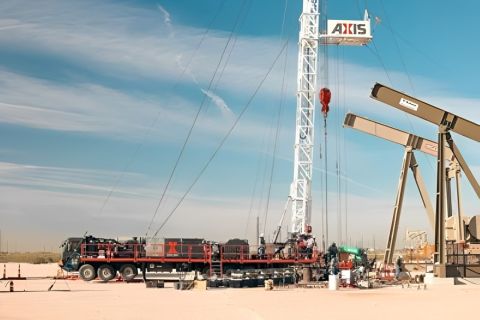
(Source: Shutterstock.com)
[Editor's note: A version of this story appears in the March 2020 edition of Oil and Gas Investor. Subscribe to the magazine here.]
If the cure for low natural gas prices is low gas prices, then things should be looking pretty good soon—but alas, that would be just in time to find ourselves in the shoulder season before air conditioning takes over U.S. demand, so it may be time to retire that old belief. Too many factors are in play.
Bad news on the demand side and persistently rising supply make natural gas an unwelcome hydrocarbon. Combine gas storage above the five-year average in the middle of a warm winter, and the surprise hit from the coronavirus, and you could not make up a worse “perfect storm.”
With spring just around the corner, we hope the coronavirus has begun fading away, but it may take several more months for the global economic disruptions it has caused to right themselves.
IHS Markit said, “If the current and unprecedented confinement measures in China stay in place until the end of February, and are lifted progressively beginning in March, the resulting economic impact will be concentrated in the first half of 2020, with a reduction of global real GDP of 0.8% in 1Q and 0.5% in 2Q.”
There is no “gas-OPEC” to render a supply agreement to restore decent prices. But some companies have taken matters into their own hands. Blackstone Minerals cut its dividend in response to falling gas income. Companies with gassy holdings in noncore parts of their portfolio were evaluating their next move—SM Energy Co. was rumored to sell its gas-weighted Eagle Ford assets for an estimated $500 million. Cabot Oil & Gas Corp. said it will only spend enough on drilling in the Marcellus this year to keep its gas production volumes flat—no growth. That’s a good thing—and inevitable for most gas producers, especially in the Northeast. Total U.S. production continues to rise, aided and abetted by Permian gas output.
For now, we cannot depend on LNG exports to save the price of gas, which at press time was a paltry $1.86 per MMBtu at Henry Hub, near a 12-month low. Benchmark LNG prices across the U.S., Europe and Asia have fallen by an average of about 30% since January, sources said.
LNG shipments have been disrupted by the Chinese economic slowdown. Consulting firm Poten & Partners said CNOOC declared force majeure to turn away LNG shipments, even as China reached an accord with the U.S. to reduce its tariffs on LNG imported from the U.S.
“CNOOC’s suppliers are assessing other options such as cargo deferments and diversions to other terminals while they consider whether to accept the force majeure declaration,” Poten & Partners said. “Suppliers already are in discussions with CNOOC about deferring deliveries as far out as April. Demand at the Guangdong Dapeng and Zhuhai LNG terminals is reportedly down by as much as a third because of factory closures.”
In addition, China’s workforce has been disrupted by quarantines, and dock workers could not report to work to unload any LNG cargoes.
The epidemic in China has reduced business and industrial activity, with January’s LNG imports dropping by about 10% year on year, said Rystad Energy. “Calculating the impact of the virus, Rystad Energy has revised its growth estimate for Chinese LNG demand this year, limiting it to 4.7% compared to 2019. Previously, Rystad expected Chinese demand to rise 10% to 13% year on year.”
It said it expected summer prices to remain at $3.30/MMBtu, “as this enables LNG producers to cover the operational costs for more than 80% of exported volumes, helped by associated liquids production.”
However, if Asian demand falls further due to slower economic growth and if effects of the coronavirus continue, “we could see prices hit a hard floor at $2.30 per MMBtu, assuming a Henry Hub price of $2 per MMBtu and sunk transportation costs.”
In early February, Cheniere Energy Inc.’s stock (NYSE: LNG) took it on the chin, even though it sells directly to PetroChina and not CNOOC. But analyst Jason Gabelman of Cowen & Co. said that was an overreaction and he saw a buying opportunity.
“LNG has not exported product to China since March 2019, likely due to tariffs on U.S. LNG being raised from 10% to 25%. True, LNG has a 1.2 million tonnes per annum (mtpa) offtake agreement with PetroChina, with part of the volume effective today and part when its Corpus Christi Train 3 starts up in 2021.”
Aside from Chinese woes, there is a global LNG oversupply. Morgan Stanley’s Devin McDermott noted that the 2020 oversupply “looks materially worse than 2019, with nearly 50 mtpa of excess LNG that needs to find a home—before accounting for any demand loss from the coronavirus in China.
“We expect coal-to-gas switching (mostly in Europe) to remove about half of this oversupply, still leaving an excess of 23 metric tons (about 3.1 Bcf/d). Without meaningful storage capacity in Asia, Europe is the only outlet for this excess gas and already has storage levels well above normal.”
Recommended Reading
Tech Trends: AI Increasing Data Center Demand for Energy
2024-04-16 - In this month’s Tech Trends, new technologies equipped with artificial intelligence take the forefront, as they assist with safety and seismic fault detection. Also, independent contractor Stena Drilling begins upgrades for their Evolution drillship.
Axis Energy Deploys Fully Electric Well Service Rig
2024-03-13 - Axis Energy Services’ EPIC RIG has the ability to run on grid power for reduced emissions and increased fuel flexibility.
Lift-off: How AI is Boosting Field and Employee Productivity
2024-04-12 - From data extraction to well optimization, the oil and gas industry embraces AI.
CERAWeek: AI, Energy Industry Meet at Scary but Exciting Crossroads
2024-03-19 - From optimizing assets to enabling interoperability, digital technology works best through collaboration.
Cyber-informed Engineering Can Fortify OT Security
2024-03-12 - Ransomware is still a top threat in cybersecurity even as hacktivist attacks trend up, and the oil and gas sector must address both to maintain operational security.





